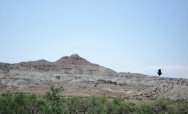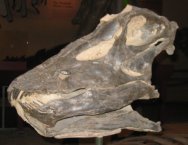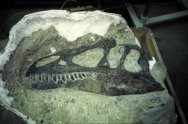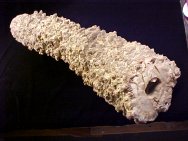Morrison Formation
Fossils of the Morrison Formation, Western United States and Canada |
The page within: |
|
The formation was named for Morrison, Colorado where its first fossils were discovered by Arthur Lakes in 1877. That same year, it became the center of the Bone Wars, a fossil collecting rivalry between paleontologists Othniel Charles Marsh and Edward Drinker Cope. Radiometric places the age at between between 148 and 155 million years (i.e., the Oxfordian, Kimmeridgian, and earliest Tithonian stages of the late Jurassic). It is thus similar in age to the Solnhofen Limestone of Germany. Fossils from the formation provide the ability to describe an environment that was dry and lacking of grasses, flowering plants, and trees. Rather, conifers were the dominant flora along with ginkgo, cycads, tree ferns, and horsetail rushes. Much of the fossilized vegetation was riparian, living along the river valleys. Insects were very similar to modern species. Fossils of fish, frogs, crocodiles, salamanders, lizards, crayfish, turtles, pterosaurs, clams are also found. Hundreds of dinosaur fossils have been discovered, including Camptosaurus, Ornitholestes, Stegosaurus, Hesperosaurus, early ankylosaurs, and most importantly, a diversity of sauropods. Sauropods that have been discovered include the Diplodocus (most famously, the first nearly-complete specimen of Diplodocus carnegiei, that is now exhibited at the Carnegie Museum of Natural History, Camarasaurus (the most commonly found sauropod), Brachiosaurus, Apatosaurus (also wrongly known as Brontosaurus), Barosaurus, the uncommon Haplocanthosaurus and the Seismosaurus. The very diversity of the sauropods has raised some questions about how they could all co-exist. While their body shapes are very similar (long neck, long tail, huge elephant-like body), they are assumed to have had very different feeding strategies, in order for all to have existed same time and place. About 75% of all Allosaurus fossils have been recovered from the Morrison Formation totalling more than sixty partial and nearly-complete specimens, including the first holotype specimen.
|
|
||||||||||||||||||
|
Fossil
Museum Navigation:
Home Geological Time Paleobiology Geological History Tree of Life Fossil Sites Fossils Evolution Fossil Record Museum Fossils |





